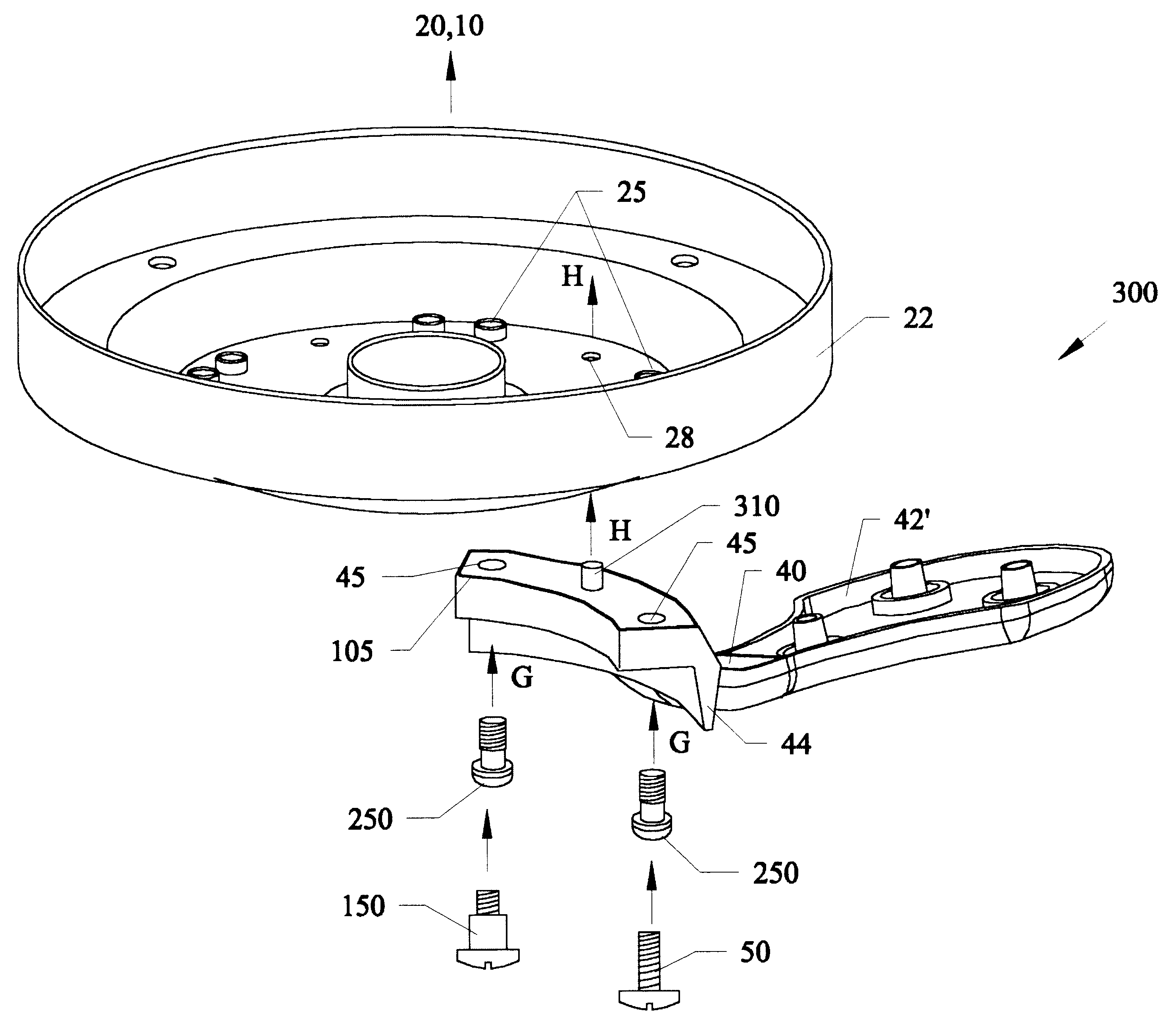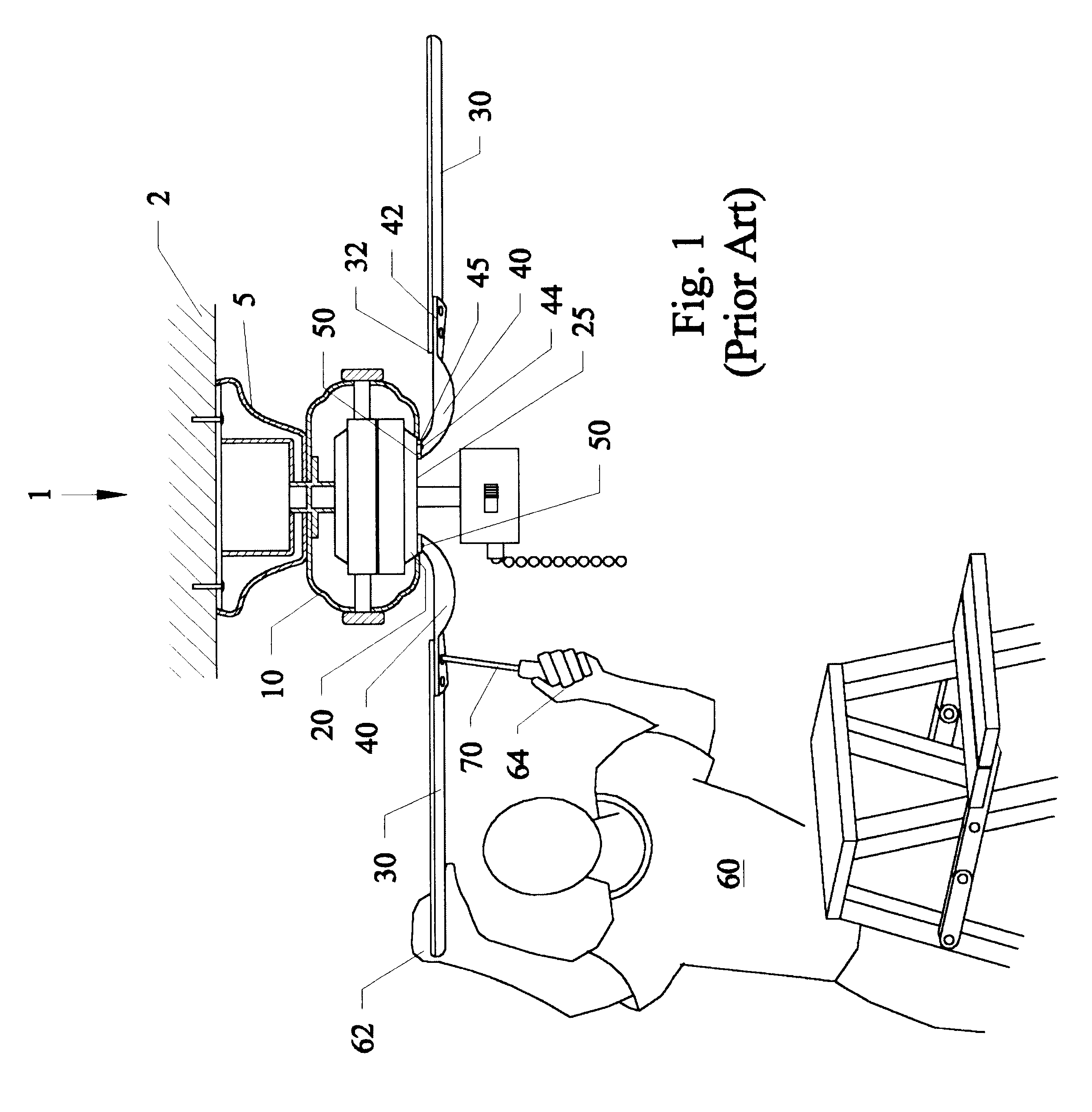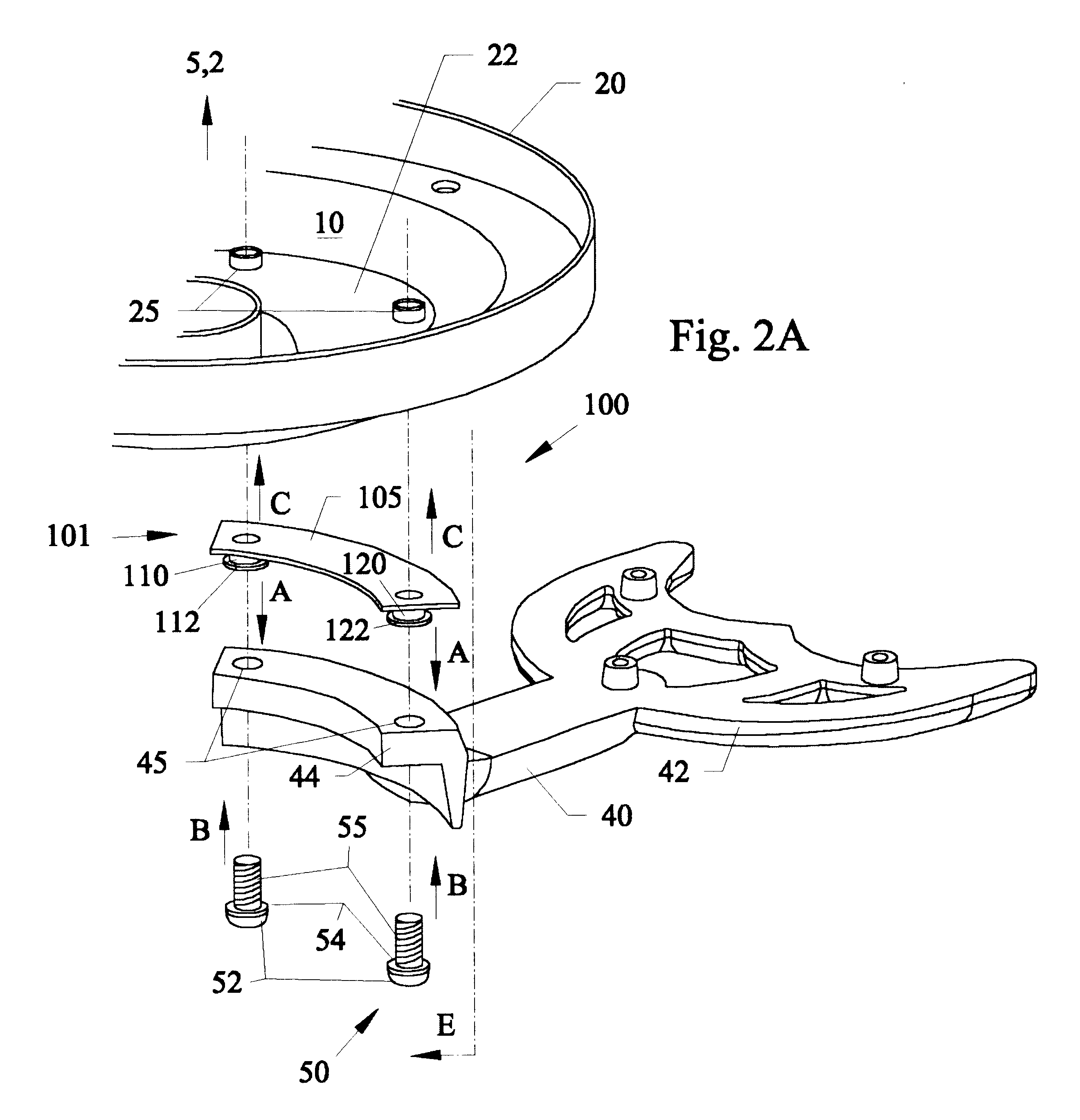Device for connecting a fan blade to a rotor of a ceiling fan motor
a ceiling fan and rotor technology, applied in the direction of liquid fuel engines, marine propulsion, vessel construction, etc., can solve the problems of user injury, user loss of balance, and increased installation time and cost,
- Summary
- Abstract
- Description
- Claims
- Application Information
AI Technical Summary
Benefits of technology
Problems solved by technology
Method used
Image
Examples
second embodiment
FIG. 3A is a perspective view of a novel captive fastener 250 with an optional spring locking washer 260 used for the second embodiment 200. FIG. 3B is a side cross-sectional view of a second embodiment 200 of using two of the novel captive fasteners 250 and spring washers 260 of FIG. 3A with a mounting arm 240, rotor 20, and bottom endshield 22 that is connected to a ceiling fan motor 10. FIG. 3C is an enlarged side view of the unattached fastener F1 of FIG. 3B. FIG. 3D is an enlarged side view of the attached fastener F2 of FIG. 3B.
Referring to FIGS. 3A-3D, the fasteners 250 are already held captive in one end of the mounting arm 240 and the opposite end of the mounting arm is already connected to a fan blade (not shown). Fasteners 250 can have a threaded end portion 255 with a diameter larger than a base neck portion 256 and a large head portion 252. The narrow base neck portion 256 between the threaded end 255 and the head 252 allows the fastener 250 to freely float therebetween...
third embodiment
FIG. 4A is a perspective exploded view of a third embodiment 300 of using either or both the captive fasteners 150, 250 of the preceding Figures, or a conventional fastener 50 with an alignment post 310 for attaching the mounting arm 40 to the a ceiling fan motor 10. Referring to FIG. 4A, an alignment post 310 having tapered rounded sides with a narrow tip portion and an expanding bottom portion is located approximately half way between through-holes 45 in end 44 of blade mounting arm 40. Opposite end 42' of blade arm 40 has attachment points similar to those previously described. An opening 28 having a diameter the same as or slightly smaller than the diameter of the base portion of post 310 is located in the bottom of motor endshield 22.
Similar to that previously described, bottom endshield 22 is attached to a rotating rotor 20 which is attached to a ceiling mounted motor 10. Next as previously described, captive fasteners 250, 150 with or without rubber grommet washer 101 have th...
PUM
 Login to View More
Login to View More Abstract
Description
Claims
Application Information
 Login to View More
Login to View More - R&D
- Intellectual Property
- Life Sciences
- Materials
- Tech Scout
- Unparalleled Data Quality
- Higher Quality Content
- 60% Fewer Hallucinations
Browse by: Latest US Patents, China's latest patents, Technical Efficacy Thesaurus, Application Domain, Technology Topic, Popular Technical Reports.
© 2025 PatSnap. All rights reserved.Legal|Privacy policy|Modern Slavery Act Transparency Statement|Sitemap|About US| Contact US: help@patsnap.com



